CLAUDIA ALARCÓN AND SILÄT’S VENICE BIENNALE PARTICIPATION
For the 60th International Exhibition of la Biennale di Venezia Stranieri Ovunque (Foregneirs Everywhere), artist Claudia Alarcón and art-collective Silät are presenting their reflections on being treated as foreigners in their own country.

Claudia Alarcón is an indigenous textile artist from the La Puntana community of Wichí people, who inhabit the Grand Chaco region that straddles the borders of Argentina, Bolivia and Paraguay. Alongside her individual practice, she leads the Silät collective, an organisation of one hundred women weavers of different generations. Together, they continue the centuries-old tradition of weaving with hand-spun vegetal fibres from the native chaguar plant, a communal, female-led production. Working closely with curator Andrei Fernández, Alarcón and Silät explore the possibilities of artmaking within and beyond these traditions. The collective held their first UK exhibition at Cecilia Brunson Projects in October 2023, and are featured this year in the Venice Biennale.
Adriano Pedrosa’s exhibition for the Biennale, Stranieri Ovunque (Foreigners Everywhere), highlights artists located at the world’s margins, and those treated as a foreigner in their own country. Alarcón and Silät’s inclusion reflects the significance of their work as an experimental expression of contemporary indigenous culture and an important contribution to the art historical narrative of geometric abstraction in Latin America.
-
Claudia Alarcón & Silät. 60th International Art Exhibition – La Biennale di Venezia, Stranieri Ovunque – Foreigners Everywhere. Photo by Marco Zorzanello. Courtesy: La Biennale di Venezia.
-
Claudia Alarcón & Silät. 60th International Art Exhibition – La Biennale di Venezia, Stranieri Ovunque – Foreigners Everywhere. Photo by Marco Zorzanello. Courtesy: La Biennale di Venezia.
-
Claudia Alarcón & Silät. 60th International Art Exhibition – La Biennale di Venezia, Stranieri Ovunque – Foreigners Everywhere. Photo by Marco Zorzanello. Courtesy: La Biennale di Venezia.
-
Claudia Alarcón & Silät. 60th International Art Exhibition – La Biennale di Venezia, Stranieri Ovunque – Foreigners Everywhere. Photo by Marco Zorzanello. Courtesy: La Biennale di Venezia.
-
Claudia Alarcón & Silät. 60th International Art Exhibition – La Biennale di Venezia, Stranieri Ovunque – Foreigners Everywhere. Photo by Marco Zorzanello. Courtesy: La Biennale di Venezia.
-
Claudia Alarcón & Silät. 60th International Art Exhibition – La Biennale di Venezia, Stranieri Ovunque – Foreigners Everywhere. Photo by Marco Zorzanello. Courtesy: La Biennale di Venezia.
-
Claudia Alarcón & Silät. 60th International Art Exhibition – La Biennale di Venezia, Stranieri Ovunque – Foreigners Everywhere. Photo by Marco Zorzanello. Courtesy: La Biennale di Venezia.
-
Claudia Alarcón & Silät. Yachup [El verano / Summer], 2023. Hand-spun chaguar fibre, natural dyes and aniline dyes, woven fabric, "yica" stitch. Framed: 164.5 x 156 cm (64 3/4 x 61 3/8 in). Unframed: 136 x 122 cm (53 1/2 x 48 in). Melania Pereyra, Nelba Mendoza. Comunidad Chowhay, Alto La Sierra, Salta.
-
Claudia Alarcón & Silät. Yachup [El verano / Summer], 2023. Hand-spun chaguar fibre, natural dyes and aniline dyes, woven fabric, "yica" stitch. Framed: 164.5 x 156 cm (64 3/4 x 61 3/8 in). Unframed: 136 x 122 cm (53 1/2 x 48 in). Melania Pereyra, Nelba Mendoza. Comunidad Chowhay, Alto La Sierra, Salta.
Claudia Alarcón’s writings about participating in the Venice Biennale: “I, along with the Silät group, was recently invited to exhibit at the Venice Biennale this year. I am aware that there are many artists who would die to be in that place, so being in this group is a pleasure because it is not only me but all the other women who have knowledge about weaving. It is true that I open possibilities to the other women, because for me it is more satisfactory that all the women are there. We all want to work; we all need it and it is true that every person interested in carrying out this task that we do has their place and can participate in this art. We have always weaved, but we never imagined this, and it is very satisfying because we have been discovered and made visible. What I want from this occasion is for this to be a way out for those of us, who live in these places and have many needs, some basic like water and food. We hope these changes will bring access for our children to a better level of education, to be able to nourish themselves with good nutrition, good medication. Today we have many needs and the women believe we can get help through what we do. We do not intend for it to solve all our problems, but rather for it to be a motivation that will open other opportunities in the future. This is what I have to say, a wish: seeing that our children, our grandchildren, are going to have more and more knowledge and are also going to weave as they learn from their elders. We continue working to show people, and our children, the practice of weaving as indigenous women. When I start weaving, I remember that I am Indigenous, I remember who I am. We named our group “Silät”, because for us that means “announcement”. We want everyone to know that we live here, that the Wichí still exist”.
Related Topics
May interest you

The International Celebration of Blasphemy and The Sacred is a presentation by Congolese artist collective Cercle d’Art des Travailleurs de Plantation Congolaise (CATPC) for the Dutch Pavilion at the 60th Venice Biennale.
DUTCH PAVILION AT THE VENICE BIENNALE
The International Celebration of Blasphemy and The Sacred is a presentation by Congolese artist collective Cercle d’Art des Travailleurs de Plantation Congolaise (CATPC) for the Dutch Pavilion at the 60th Venice Biennale.

The International Celebration of Blasphemy and The Sacred is a presentation by Congolese artist collective Cercle d’Art des Travailleurs de Plantation Congolaise (CATPC) for the Dutch Pavilion at the 60th Venice Biennale.
DUTCH PAVILION AT THE VENICE BIENNALE
The International Celebration of Blasphemy and The Sacred is a presentation by Congolese artist collective Cercle d’Art des Travailleurs de Plantation Congolaise (CATPC) for the Dutch Pavilion at the 60th Venice Biennale.
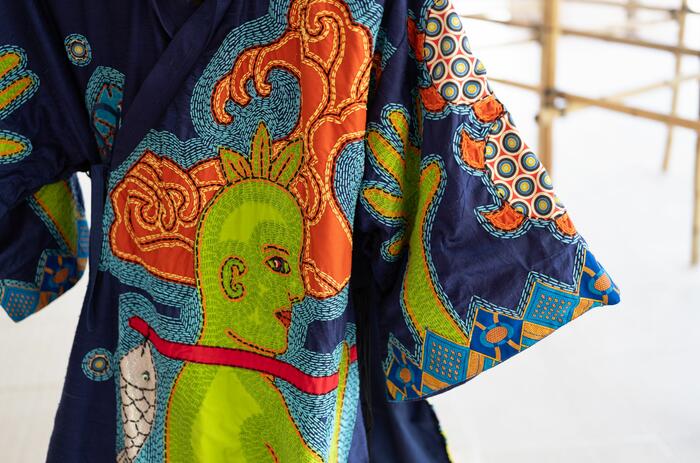
For the 60th International Art Exhibition – La Biennale di Venezia, the Nordic Countries Pavilion invites the audience to embark on a journey aboard a spectral dragon ship which occupies the light and open architecture of Sverre Fehn’s meditative masterpiece in the Giardini of the Biennale, Venice.
THE ALTERSEA OPERA: THE NORDIC COUNTRIES PAVILION'S PROPOSAL
For the 60th International Art Exhibition – La Biennale di Venezia, the Nordic Countries Pavilion invites the audience to embark on a journey aboard a spectral dragon ship which occupies the light and open architecture of Sverre Fehn’s meditative masterpiece in the Giardini of the Biennale, Venice.

The Georgian Pavilion in the 60th Venice Biennale presented The Art of Seeing– States of Astronomy, a collaborative project presented by a team of Georgian and French curators and artists.
THE ART OF SEEING: GEORGIA’S PAVILION IN THE VENICE BIENNALE
The Georgian Pavilion in the 60th Venice Biennale presented The Art of Seeing– States of Astronomy, a collaborative project presented by a team of Georgian and French curators and artists.
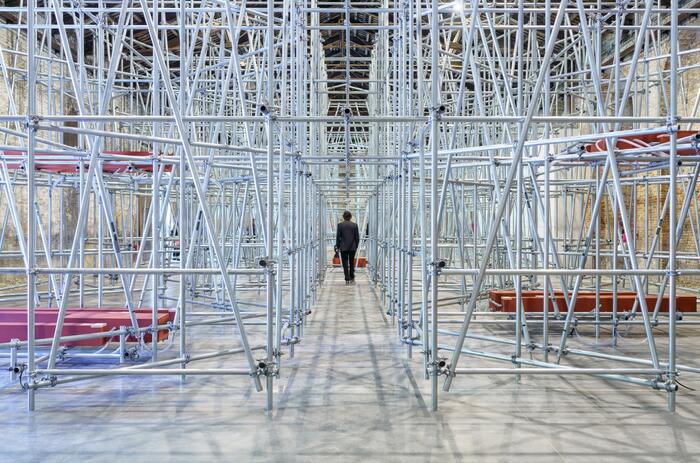
Due qui / To Hear is the project for the Italian Pavilion at the 60th Venice Biennale Curated by Luca Cerizza (with the assistance of Francesca Verga), it presents work that Massimo Bartolini has created in collaboration with several musicians (for the permanent installations) and writers (for the public program), employing the cooperative approach that is a hallmark of his practice.
DUE QUI/TO HEAR: ITALY’S PAVILION FOR THE VENICE BIENNALE
Due qui / To Hear is the project for the Italian Pavilion at the 60th Venice Biennale Curated by Luca Cerizza (with the assistance of Francesca Verga), it presents work that Massimo Bartolini has created in collaboration with several musicians (for the permanent installations) and writers (for the public program), employing the cooperative approach that is a hallmark of his practice.
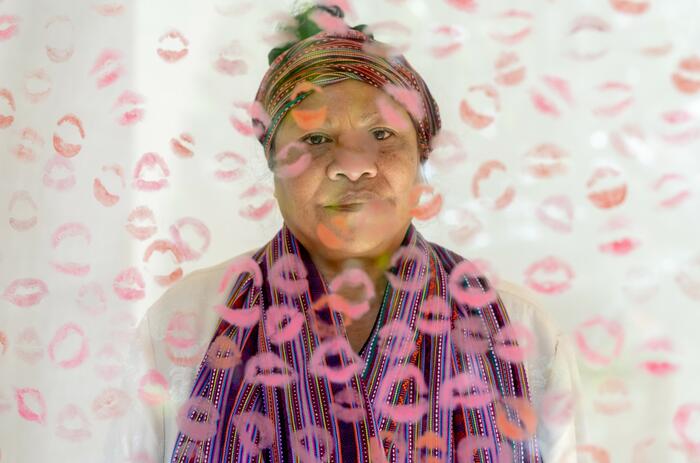
Maria Madeira is the artist representing Timor-Leste at the 60th International Venice Biennale. Timor-Leste’s inaugural pavilion coincides with the country’s 25th anniversary of independence. Commissioned by the Ministry of Youth, Sports, Arts and Culture, Democratic Republic of Timor-Leste and curated by Professor Natalie King OAM.
KISS AND DON’T TELL: TIMOR-LESTE IN THE VENICE BIENNALE
Maria Madeira is the artist representing Timor-Leste at the 60th International Venice Biennale. Timor-Leste’s inaugural pavilion coincides with the country’s 25th anniversary of independence. Commissioned by the Ministry of Youth, Sports, Arts and Culture, Democratic Republic of Timor-Leste and curated by Professor Natalie King OAM.
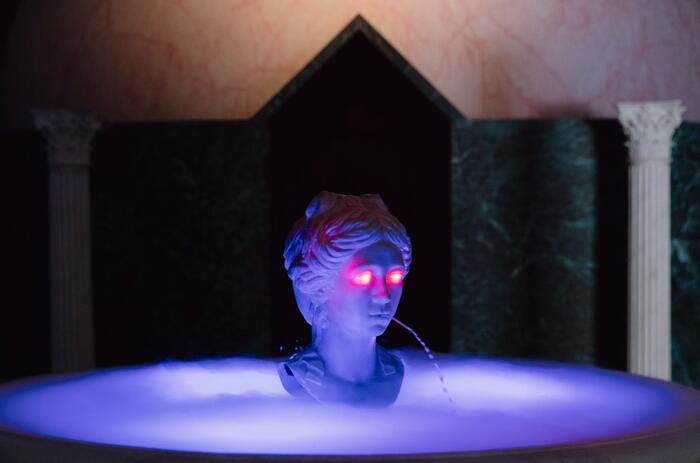
The Venice Bienanale’s Swiss Pavilion presents Super Superior Civilizations: an exhibition with the sixth and seventh chapters of Guerreiro do Divino Amor’s monumental “Superfictional World Atlas” saga: The Miracle of Helvetia and Roma Talismano. Curated by: Andrea Bellini.
THE SWISS PAVILION’S VENICE BIENNALE EXHIBITION BY GUERREIRO DO DIVINO AMOR
The Venice Bienanale’s Swiss Pavilion presents Super Superior Civilizations: an exhibition with the sixth and seventh chapters of Guerreiro do Divino Amor’s monumental “Superfictional World Atlas” saga: The Miracle of Helvetia and Roma Talismano. Curated by: Andrea Bellini.

For the 60th Venice Biennale, the Republic of Armenia presents Echo, a multi-dimensional multi-media installation project by Paris-based Armenian artist Nina Khemchyan.
“ECHO” BY NINCA KHEMCHYAN: ARMENIAN PAVILION IN THE VENICE BIENNALE
For the 60th Venice Biennale, the Republic of Armenia presents Echo, a multi-dimensional multi-media installation project by Paris-based Armenian artist Nina Khemchyan.
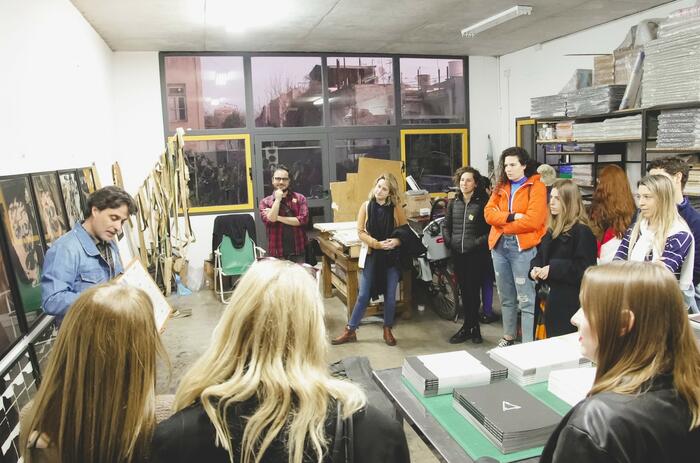
With the support of the Ministry of Culture of the City of Buenos Aires, on Friday, June 28, 2024 the Gallery circuit of galleries returns to the areas of Recolecta, Retiro and Microcentro.
GALLERY BUENOS AIRES RETURNS FOR THE FIRST 2024 EDITION
With the support of the Ministry of Culture of the City of Buenos Aires, on Friday, June 28, 2024 the Gallery circuit of galleries returns to the areas of Recolecta, Retiro and Microcentro.

Sara Facio passed away at the age of 92. Photographer, curator, journalist and editor, she stood out for her portraits of Latin American cultural figures and for her sharp and sensitive spirit that vindicated photography in the art world.
FAREWELL TO SARA FACIO, THE GREAT ARGENTINE PHOTOGRAPHER
Sara Facio passed away at the age of 92. Photographer, curator, journalist and editor, she stood out for her portraits of Latin American cultural figures and for her sharp and sensitive spirit that vindicated photography in the art world.
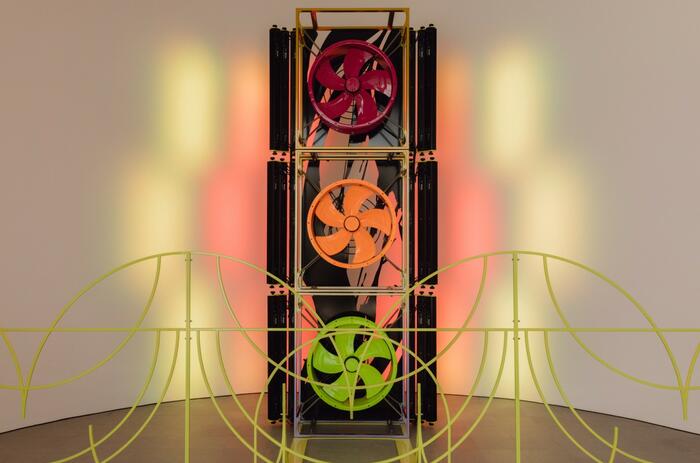
For the 60th International Venice Biennale, Nemes designed the project as an immersive, painting-based Gesamtkunstwerk that expands the genre of painting and extends it to other media. Project curated by Róna Kopeczky.
TECHNO ZEN BY MÁRTON NEMEZ: THE HUNGARIAN PAVILION IN VENICE BIENNALE
For the 60th International Venice Biennale, Nemes designed the project as an immersive, painting-based Gesamtkunstwerk that expands the genre of painting and extends it to other media. Project curated by Róna Kopeczky.
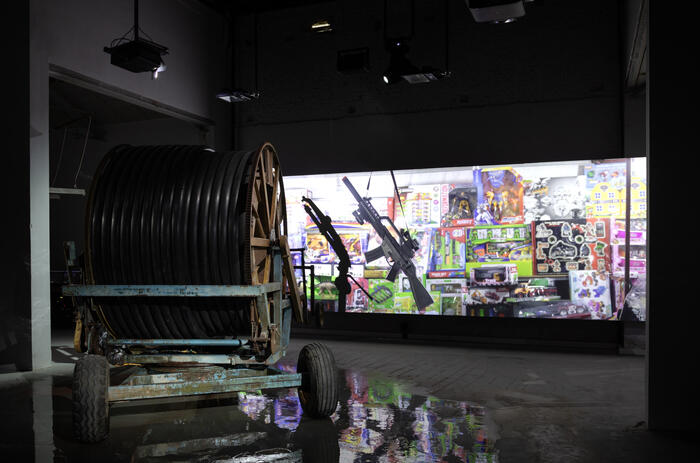
Xirómero / Dryland is an interdisciplinary collective work conceived by Thanasis Deligiannis and Yannis Michalopoulos, created along with the artists Elia Kalogianni, Yorgos Kyvernitis, Kostas Chaikalis and Fotis Sagonas for the Greek Pavilion at the 60th Venice Biennale. The project is curated by Panos Giannikopoulos.
WATER AS A PRISM: GREEK PAVILION AT THE VENICE BIENNALE
Xirómero / Dryland is an interdisciplinary collective work conceived by Thanasis Deligiannis and Yannis Michalopoulos, created along with the artists Elia Kalogianni, Yorgos Kyvernitis, Kostas Chaikalis and Fotis Sagonas for the Greek Pavilion at the 60th Venice Biennale. The project is curated by Panos Giannikopoulos.

The exhibition of the 60th edition of the Venice Biennale - Stranieri Ovunque (Foregneirs Everywhere) - curated by Brazilian Adriano Pedrosa, presents 331 artists, significantly more than the usual number. More than a third of those artists come from Latin America.
FOREIGNERS EVERYWHERE: LATIN AMERICA TAKES OVER THE VENICE BIENNALE
The exhibition of the 60th edition of the Venice Biennale - Stranieri Ovunque (Foregneirs Everywhere) - curated by Brazilian Adriano Pedrosa, presents 331 artists, significantly more than the usual number. More than a third of those artists come from Latin America.
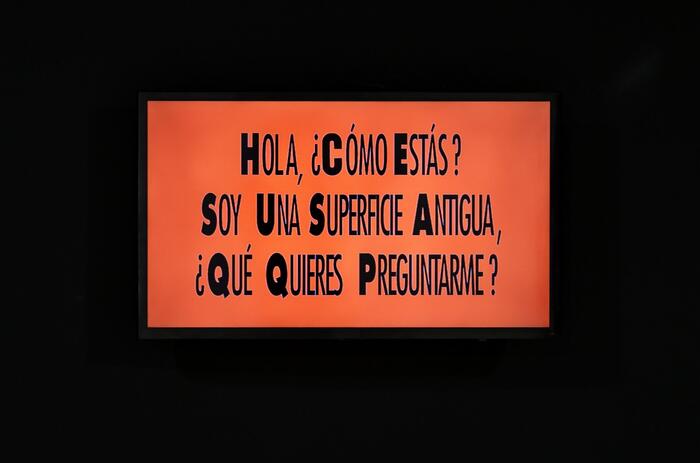
The Museum of Modern Art of Buenos Aires inaugurated El Aprendizaje Infinito (Infinite Learning), an exhibition that recognizes Argentina's master artists and puts in dialogue the historical tradition of arts education and the experimental projects of the latest decades.
EXPERIMENTAL ART PROJECTS IN ARGENTINA
The Museum of Modern Art of Buenos Aires inaugurated El Aprendizaje Infinito (Infinite Learning), an exhibition that recognizes Argentina's master artists and puts in dialogue the historical tradition of arts education and the experimental projects of the latest decades.

Spanish-Peruvian artist Sandra Gamarra Heshiki represents Spain at the Venice Biennale. It is the first time in 60 editions that an artist not born in Spain does so. Her project Pinacoteca migrante (Migrant gallery), questions colonial narratives and historical modes of representation.
PINACOTECA MIGRANTE: SPAIN AT THE VENICE BIENNALE
Spanish-Peruvian artist Sandra Gamarra Heshiki represents Spain at the Venice Biennale. It is the first time in 60 editions that an artist not born in Spain does so. Her project Pinacoteca migrante (Migrant gallery), questions colonial narratives and historical modes of representation.

The International Celebration of Blasphemy and The Sacred is a presentation by Congolese artist collective Cercle d’Art des Travailleurs de Plantation Congolaise (CATPC) for the Dutch Pavilion at the 60th Venice Biennale.
DUTCH PAVILION AT THE VENICE BIENNALE
The International Celebration of Blasphemy and The Sacred is a presentation by Congolese artist collective Cercle d’Art des Travailleurs de Plantation Congolaise (CATPC) for the Dutch Pavilion at the 60th Venice Biennale.

For the 60th International Art Exhibition – La Biennale di Venezia, the Nordic Countries Pavilion invites the audience to embark on a journey aboard a spectral dragon ship which occupies the light and open architecture of Sverre Fehn’s meditative masterpiece in the Giardini of the Biennale, Venice.
THE ALTERSEA OPERA: THE NORDIC COUNTRIES PAVILION'S PROPOSAL
For the 60th International Art Exhibition – La Biennale di Venezia, the Nordic Countries Pavilion invites the audience to embark on a journey aboard a spectral dragon ship which occupies the light and open architecture of Sverre Fehn’s meditative masterpiece in the Giardini of the Biennale, Venice.

The Georgian Pavilion in the 60th Venice Biennale presented The Art of Seeing– States of Astronomy, a collaborative project presented by a team of Georgian and French curators and artists.
THE ART OF SEEING: GEORGIA’S PAVILION IN THE VENICE BIENNALE
The Georgian Pavilion in the 60th Venice Biennale presented The Art of Seeing– States of Astronomy, a collaborative project presented by a team of Georgian and French curators and artists.

Due qui / To Hear is the project for the Italian Pavilion at the 60th Venice Biennale Curated by Luca Cerizza (with the assistance of Francesca Verga), it presents work that Massimo Bartolini has created in collaboration with several musicians (for the permanent installations) and writers (for the public program), employing the cooperative approach that is a hallmark of his practice.
DUE QUI/TO HEAR: ITALY’S PAVILION FOR THE VENICE BIENNALE
Due qui / To Hear is the project for the Italian Pavilion at the 60th Venice Biennale Curated by Luca Cerizza (with the assistance of Francesca Verga), it presents work that Massimo Bartolini has created in collaboration with several musicians (for the permanent installations) and writers (for the public program), employing the cooperative approach that is a hallmark of his practice.

Maria Madeira is the artist representing Timor-Leste at the 60th International Venice Biennale. Timor-Leste’s inaugural pavilion coincides with the country’s 25th anniversary of independence. Commissioned by the Ministry of Youth, Sports, Arts and Culture, Democratic Republic of Timor-Leste and curated by Professor Natalie King OAM.
KISS AND DON’T TELL: TIMOR-LESTE IN THE VENICE BIENNALE
Maria Madeira is the artist representing Timor-Leste at the 60th International Venice Biennale. Timor-Leste’s inaugural pavilion coincides with the country’s 25th anniversary of independence. Commissioned by the Ministry of Youth, Sports, Arts and Culture, Democratic Republic of Timor-Leste and curated by Professor Natalie King OAM.

The Venice Bienanale’s Swiss Pavilion presents Super Superior Civilizations: an exhibition with the sixth and seventh chapters of Guerreiro do Divino Amor’s monumental “Superfictional World Atlas” saga: The Miracle of Helvetia and Roma Talismano. Curated by: Andrea Bellini.
THE SWISS PAVILION’S VENICE BIENNALE EXHIBITION BY GUERREIRO DO DIVINO AMOR
The Venice Bienanale’s Swiss Pavilion presents Super Superior Civilizations: an exhibition with the sixth and seventh chapters of Guerreiro do Divino Amor’s monumental “Superfictional World Atlas” saga: The Miracle of Helvetia and Roma Talismano. Curated by: Andrea Bellini.

For the 60th Venice Biennale, the Republic of Armenia presents Echo, a multi-dimensional multi-media installation project by Paris-based Armenian artist Nina Khemchyan.
“ECHO” BY NINCA KHEMCHYAN: ARMENIAN PAVILION IN THE VENICE BIENNALE
For the 60th Venice Biennale, the Republic of Armenia presents Echo, a multi-dimensional multi-media installation project by Paris-based Armenian artist Nina Khemchyan.

With the support of the Ministry of Culture of the City of Buenos Aires, on Friday, June 28, 2024 the Gallery circuit of galleries returns to the areas of Recolecta, Retiro and Microcentro.
GALLERY BUENOS AIRES RETURNS FOR THE FIRST 2024 EDITION
With the support of the Ministry of Culture of the City of Buenos Aires, on Friday, June 28, 2024 the Gallery circuit of galleries returns to the areas of Recolecta, Retiro and Microcentro.

Sara Facio passed away at the age of 92. Photographer, curator, journalist and editor, she stood out for her portraits of Latin American cultural figures and for her sharp and sensitive spirit that vindicated photography in the art world.
FAREWELL TO SARA FACIO, THE GREAT ARGENTINE PHOTOGRAPHER
Sara Facio passed away at the age of 92. Photographer, curator, journalist and editor, she stood out for her portraits of Latin American cultural figures and for her sharp and sensitive spirit that vindicated photography in the art world.

For the 60th International Venice Biennale, Nemes designed the project as an immersive, painting-based Gesamtkunstwerk that expands the genre of painting and extends it to other media. Project curated by Róna Kopeczky.
TECHNO ZEN BY MÁRTON NEMEZ: THE HUNGARIAN PAVILION IN VENICE BIENNALE
For the 60th International Venice Biennale, Nemes designed the project as an immersive, painting-based Gesamtkunstwerk that expands the genre of painting and extends it to other media. Project curated by Róna Kopeczky.

Xirómero / Dryland is an interdisciplinary collective work conceived by Thanasis Deligiannis and Yannis Michalopoulos, created along with the artists Elia Kalogianni, Yorgos Kyvernitis, Kostas Chaikalis and Fotis Sagonas for the Greek Pavilion at the 60th Venice Biennale. The project is curated by Panos Giannikopoulos.
WATER AS A PRISM: GREEK PAVILION AT THE VENICE BIENNALE
Xirómero / Dryland is an interdisciplinary collective work conceived by Thanasis Deligiannis and Yannis Michalopoulos, created along with the artists Elia Kalogianni, Yorgos Kyvernitis, Kostas Chaikalis and Fotis Sagonas for the Greek Pavilion at the 60th Venice Biennale. The project is curated by Panos Giannikopoulos.

The exhibition of the 60th edition of the Venice Biennale - Stranieri Ovunque (Foregneirs Everywhere) - curated by Brazilian Adriano Pedrosa, presents 331 artists, significantly more than the usual number. More than a third of those artists come from Latin America.
FOREIGNERS EVERYWHERE: LATIN AMERICA TAKES OVER THE VENICE BIENNALE
The exhibition of the 60th edition of the Venice Biennale - Stranieri Ovunque (Foregneirs Everywhere) - curated by Brazilian Adriano Pedrosa, presents 331 artists, significantly more than the usual number. More than a third of those artists come from Latin America.

The Museum of Modern Art of Buenos Aires inaugurated El Aprendizaje Infinito (Infinite Learning), an exhibition that recognizes Argentina's master artists and puts in dialogue the historical tradition of arts education and the experimental projects of the latest decades.
EXPERIMENTAL ART PROJECTS IN ARGENTINA
The Museum of Modern Art of Buenos Aires inaugurated El Aprendizaje Infinito (Infinite Learning), an exhibition that recognizes Argentina's master artists and puts in dialogue the historical tradition of arts education and the experimental projects of the latest decades.

Spanish-Peruvian artist Sandra Gamarra Heshiki represents Spain at the Venice Biennale. It is the first time in 60 editions that an artist not born in Spain does so. Her project Pinacoteca migrante (Migrant gallery), questions colonial narratives and historical modes of representation.
PINACOTECA MIGRANTE: SPAIN AT THE VENICE BIENNALE
Spanish-Peruvian artist Sandra Gamarra Heshiki represents Spain at the Venice Biennale. It is the first time in 60 editions that an artist not born in Spain does so. Her project Pinacoteca migrante (Migrant gallery), questions colonial narratives and historical modes of representation.

The International Celebration of Blasphemy and The Sacred is a presentation by Congolese artist collective Cercle d’Art des Travailleurs de Plantation Congolaise (CATPC) for the Dutch Pavilion at the 60th Venice Biennale.
DUTCH PAVILION AT THE VENICE BIENNALE
The International Celebration of Blasphemy and The Sacred is a presentation by Congolese artist collective Cercle d’Art des Travailleurs de Plantation Congolaise (CATPC) for the Dutch Pavilion at the 60th Venice Biennale.

For the 60th International Art Exhibition – La Biennale di Venezia, the Nordic Countries Pavilion invites the audience to embark on a journey aboard a spectral dragon ship which occupies the light and open architecture of Sverre Fehn’s meditative masterpiece in the Giardini of the Biennale, Venice.
THE ALTERSEA OPERA: THE NORDIC COUNTRIES PAVILION'S PROPOSAL
For the 60th International Art Exhibition – La Biennale di Venezia, the Nordic Countries Pavilion invites the audience to embark on a journey aboard a spectral dragon ship which occupies the light and open architecture of Sverre Fehn’s meditative masterpiece in the Giardini of the Biennale, Venice.

The Georgian Pavilion in the 60th Venice Biennale presented The Art of Seeing– States of Astronomy, a collaborative project presented by a team of Georgian and French curators and artists.
THE ART OF SEEING: GEORGIA’S PAVILION IN THE VENICE BIENNALE
The Georgian Pavilion in the 60th Venice Biennale presented The Art of Seeing– States of Astronomy, a collaborative project presented by a team of Georgian and French curators and artists.

Due qui / To Hear is the project for the Italian Pavilion at the 60th Venice Biennale Curated by Luca Cerizza (with the assistance of Francesca Verga), it presents work that Massimo Bartolini has created in collaboration with several musicians (for the permanent installations) and writers (for the public program), employing the cooperative approach that is a hallmark of his practice.
DUE QUI/TO HEAR: ITALY’S PAVILION FOR THE VENICE BIENNALE
Due qui / To Hear is the project for the Italian Pavilion at the 60th Venice Biennale Curated by Luca Cerizza (with the assistance of Francesca Verga), it presents work that Massimo Bartolini has created in collaboration with several musicians (for the permanent installations) and writers (for the public program), employing the cooperative approach that is a hallmark of his practice.

Maria Madeira is the artist representing Timor-Leste at the 60th International Venice Biennale. Timor-Leste’s inaugural pavilion coincides with the country’s 25th anniversary of independence. Commissioned by the Ministry of Youth, Sports, Arts and Culture, Democratic Republic of Timor-Leste and curated by Professor Natalie King OAM.
KISS AND DON’T TELL: TIMOR-LESTE IN THE VENICE BIENNALE
Maria Madeira is the artist representing Timor-Leste at the 60th International Venice Biennale. Timor-Leste’s inaugural pavilion coincides with the country’s 25th anniversary of independence. Commissioned by the Ministry of Youth, Sports, Arts and Culture, Democratic Republic of Timor-Leste and curated by Professor Natalie King OAM.

The Venice Bienanale’s Swiss Pavilion presents Super Superior Civilizations: an exhibition with the sixth and seventh chapters of Guerreiro do Divino Amor’s monumental “Superfictional World Atlas” saga: The Miracle of Helvetia and Roma Talismano. Curated by: Andrea Bellini.
THE SWISS PAVILION’S VENICE BIENNALE EXHIBITION BY GUERREIRO DO DIVINO AMOR
The Venice Bienanale’s Swiss Pavilion presents Super Superior Civilizations: an exhibition with the sixth and seventh chapters of Guerreiro do Divino Amor’s monumental “Superfictional World Atlas” saga: The Miracle of Helvetia and Roma Talismano. Curated by: Andrea Bellini.

For the 60th Venice Biennale, the Republic of Armenia presents Echo, a multi-dimensional multi-media installation project by Paris-based Armenian artist Nina Khemchyan.
“ECHO” BY NINCA KHEMCHYAN: ARMENIAN PAVILION IN THE VENICE BIENNALE
For the 60th Venice Biennale, the Republic of Armenia presents Echo, a multi-dimensional multi-media installation project by Paris-based Armenian artist Nina Khemchyan.

With the support of the Ministry of Culture of the City of Buenos Aires, on Friday, June 28, 2024 the Gallery circuit of galleries returns to the areas of Recolecta, Retiro and Microcentro.
GALLERY BUENOS AIRES RETURNS FOR THE FIRST 2024 EDITION
With the support of the Ministry of Culture of the City of Buenos Aires, on Friday, June 28, 2024 the Gallery circuit of galleries returns to the areas of Recolecta, Retiro and Microcentro.

Sara Facio passed away at the age of 92. Photographer, curator, journalist and editor, she stood out for her portraits of Latin American cultural figures and for her sharp and sensitive spirit that vindicated photography in the art world.
FAREWELL TO SARA FACIO, THE GREAT ARGENTINE PHOTOGRAPHER
Sara Facio passed away at the age of 92. Photographer, curator, journalist and editor, she stood out for her portraits of Latin American cultural figures and for her sharp and sensitive spirit that vindicated photography in the art world.

For the 60th International Venice Biennale, Nemes designed the project as an immersive, painting-based Gesamtkunstwerk that expands the genre of painting and extends it to other media. Project curated by Róna Kopeczky.
TECHNO ZEN BY MÁRTON NEMEZ: THE HUNGARIAN PAVILION IN VENICE BIENNALE
For the 60th International Venice Biennale, Nemes designed the project as an immersive, painting-based Gesamtkunstwerk that expands the genre of painting and extends it to other media. Project curated by Róna Kopeczky.

Xirómero / Dryland is an interdisciplinary collective work conceived by Thanasis Deligiannis and Yannis Michalopoulos, created along with the artists Elia Kalogianni, Yorgos Kyvernitis, Kostas Chaikalis and Fotis Sagonas for the Greek Pavilion at the 60th Venice Biennale. The project is curated by Panos Giannikopoulos.
WATER AS A PRISM: GREEK PAVILION AT THE VENICE BIENNALE
Xirómero / Dryland is an interdisciplinary collective work conceived by Thanasis Deligiannis and Yannis Michalopoulos, created along with the artists Elia Kalogianni, Yorgos Kyvernitis, Kostas Chaikalis and Fotis Sagonas for the Greek Pavilion at the 60th Venice Biennale. The project is curated by Panos Giannikopoulos.

The exhibition of the 60th edition of the Venice Biennale - Stranieri Ovunque (Foregneirs Everywhere) - curated by Brazilian Adriano Pedrosa, presents 331 artists, significantly more than the usual number. More than a third of those artists come from Latin America.
FOREIGNERS EVERYWHERE: LATIN AMERICA TAKES OVER THE VENICE BIENNALE
The exhibition of the 60th edition of the Venice Biennale - Stranieri Ovunque (Foregneirs Everywhere) - curated by Brazilian Adriano Pedrosa, presents 331 artists, significantly more than the usual number. More than a third of those artists come from Latin America.

The Museum of Modern Art of Buenos Aires inaugurated El Aprendizaje Infinito (Infinite Learning), an exhibition that recognizes Argentina's master artists and puts in dialogue the historical tradition of arts education and the experimental projects of the latest decades.
EXPERIMENTAL ART PROJECTS IN ARGENTINA
The Museum of Modern Art of Buenos Aires inaugurated El Aprendizaje Infinito (Infinite Learning), an exhibition that recognizes Argentina's master artists and puts in dialogue the historical tradition of arts education and the experimental projects of the latest decades.

Spanish-Peruvian artist Sandra Gamarra Heshiki represents Spain at the Venice Biennale. It is the first time in 60 editions that an artist not born in Spain does so. Her project Pinacoteca migrante (Migrant gallery), questions colonial narratives and historical modes of representation.
PINACOTECA MIGRANTE: SPAIN AT THE VENICE BIENNALE
Spanish-Peruvian artist Sandra Gamarra Heshiki represents Spain at the Venice Biennale. It is the first time in 60 editions that an artist not born in Spain does so. Her project Pinacoteca migrante (Migrant gallery), questions colonial narratives and historical modes of representation.

The International Celebration of Blasphemy and The Sacred is a presentation by Congolese artist collective Cercle d’Art des Travailleurs de Plantation Congolaise (CATPC) for the Dutch Pavilion at the 60th Venice Biennale.
DUTCH PAVILION AT THE VENICE BIENNALE
The International Celebration of Blasphemy and The Sacred is a presentation by Congolese artist collective Cercle d’Art des Travailleurs de Plantation Congolaise (CATPC) for the Dutch Pavilion at the 60th Venice Biennale.

For the 60th International Art Exhibition – La Biennale di Venezia, the Nordic Countries Pavilion invites the audience to embark on a journey aboard a spectral dragon ship which occupies the light and open architecture of Sverre Fehn’s meditative masterpiece in the Giardini of the Biennale, Venice.
THE ALTERSEA OPERA: THE NORDIC COUNTRIES PAVILION'S PROPOSAL
For the 60th International Art Exhibition – La Biennale di Venezia, the Nordic Countries Pavilion invites the audience to embark on a journey aboard a spectral dragon ship which occupies the light and open architecture of Sverre Fehn’s meditative masterpiece in the Giardini of the Biennale, Venice.

The Georgian Pavilion in the 60th Venice Biennale presented The Art of Seeing– States of Astronomy, a collaborative project presented by a team of Georgian and French curators and artists.
THE ART OF SEEING: GEORGIA’S PAVILION IN THE VENICE BIENNALE
The Georgian Pavilion in the 60th Venice Biennale presented The Art of Seeing– States of Astronomy, a collaborative project presented by a team of Georgian and French curators and artists.

Due qui / To Hear is the project for the Italian Pavilion at the 60th Venice Biennale Curated by Luca Cerizza (with the assistance of Francesca Verga), it presents work that Massimo Bartolini has created in collaboration with several musicians (for the permanent installations) and writers (for the public program), employing the cooperative approach that is a hallmark of his practice.
DUE QUI/TO HEAR: ITALY’S PAVILION FOR THE VENICE BIENNALE
Due qui / To Hear is the project for the Italian Pavilion at the 60th Venice Biennale Curated by Luca Cerizza (with the assistance of Francesca Verga), it presents work that Massimo Bartolini has created in collaboration with several musicians (for the permanent installations) and writers (for the public program), employing the cooperative approach that is a hallmark of his practice.

Maria Madeira is the artist representing Timor-Leste at the 60th International Venice Biennale. Timor-Leste’s inaugural pavilion coincides with the country’s 25th anniversary of independence. Commissioned by the Ministry of Youth, Sports, Arts and Culture, Democratic Republic of Timor-Leste and curated by Professor Natalie King OAM.
KISS AND DON’T TELL: TIMOR-LESTE IN THE VENICE BIENNALE
Maria Madeira is the artist representing Timor-Leste at the 60th International Venice Biennale. Timor-Leste’s inaugural pavilion coincides with the country’s 25th anniversary of independence. Commissioned by the Ministry of Youth, Sports, Arts and Culture, Democratic Republic of Timor-Leste and curated by Professor Natalie King OAM.

The Venice Bienanale’s Swiss Pavilion presents Super Superior Civilizations: an exhibition with the sixth and seventh chapters of Guerreiro do Divino Amor’s monumental “Superfictional World Atlas” saga: The Miracle of Helvetia and Roma Talismano. Curated by: Andrea Bellini.
THE SWISS PAVILION’S VENICE BIENNALE EXHIBITION BY GUERREIRO DO DIVINO AMOR
The Venice Bienanale’s Swiss Pavilion presents Super Superior Civilizations: an exhibition with the sixth and seventh chapters of Guerreiro do Divino Amor’s monumental “Superfictional World Atlas” saga: The Miracle of Helvetia and Roma Talismano. Curated by: Andrea Bellini.

For the 60th Venice Biennale, the Republic of Armenia presents Echo, a multi-dimensional multi-media installation project by Paris-based Armenian artist Nina Khemchyan.
“ECHO” BY NINCA KHEMCHYAN: ARMENIAN PAVILION IN THE VENICE BIENNALE
For the 60th Venice Biennale, the Republic of Armenia presents Echo, a multi-dimensional multi-media installation project by Paris-based Armenian artist Nina Khemchyan.

With the support of the Ministry of Culture of the City of Buenos Aires, on Friday, June 28, 2024 the Gallery circuit of galleries returns to the areas of Recolecta, Retiro and Microcentro.
GALLERY BUENOS AIRES RETURNS FOR THE FIRST 2024 EDITION
With the support of the Ministry of Culture of the City of Buenos Aires, on Friday, June 28, 2024 the Gallery circuit of galleries returns to the areas of Recolecta, Retiro and Microcentro.

Sara Facio passed away at the age of 92. Photographer, curator, journalist and editor, she stood out for her portraits of Latin American cultural figures and for her sharp and sensitive spirit that vindicated photography in the art world.
FAREWELL TO SARA FACIO, THE GREAT ARGENTINE PHOTOGRAPHER
Sara Facio passed away at the age of 92. Photographer, curator, journalist and editor, she stood out for her portraits of Latin American cultural figures and for her sharp and sensitive spirit that vindicated photography in the art world.

For the 60th International Venice Biennale, Nemes designed the project as an immersive, painting-based Gesamtkunstwerk that expands the genre of painting and extends it to other media. Project curated by Róna Kopeczky.
TECHNO ZEN BY MÁRTON NEMEZ: THE HUNGARIAN PAVILION IN VENICE BIENNALE
For the 60th International Venice Biennale, Nemes designed the project as an immersive, painting-based Gesamtkunstwerk that expands the genre of painting and extends it to other media. Project curated by Róna Kopeczky.

Xirómero / Dryland is an interdisciplinary collective work conceived by Thanasis Deligiannis and Yannis Michalopoulos, created along with the artists Elia Kalogianni, Yorgos Kyvernitis, Kostas Chaikalis and Fotis Sagonas for the Greek Pavilion at the 60th Venice Biennale. The project is curated by Panos Giannikopoulos.
WATER AS A PRISM: GREEK PAVILION AT THE VENICE BIENNALE
Xirómero / Dryland is an interdisciplinary collective work conceived by Thanasis Deligiannis and Yannis Michalopoulos, created along with the artists Elia Kalogianni, Yorgos Kyvernitis, Kostas Chaikalis and Fotis Sagonas for the Greek Pavilion at the 60th Venice Biennale. The project is curated by Panos Giannikopoulos.

The exhibition of the 60th edition of the Venice Biennale - Stranieri Ovunque (Foregneirs Everywhere) - curated by Brazilian Adriano Pedrosa, presents 331 artists, significantly more than the usual number. More than a third of those artists come from Latin America.
FOREIGNERS EVERYWHERE: LATIN AMERICA TAKES OVER THE VENICE BIENNALE
The exhibition of the 60th edition of the Venice Biennale - Stranieri Ovunque (Foregneirs Everywhere) - curated by Brazilian Adriano Pedrosa, presents 331 artists, significantly more than the usual number. More than a third of those artists come from Latin America.

The Museum of Modern Art of Buenos Aires inaugurated El Aprendizaje Infinito (Infinite Learning), an exhibition that recognizes Argentina's master artists and puts in dialogue the historical tradition of arts education and the experimental projects of the latest decades.
EXPERIMENTAL ART PROJECTS IN ARGENTINA
The Museum of Modern Art of Buenos Aires inaugurated El Aprendizaje Infinito (Infinite Learning), an exhibition that recognizes Argentina's master artists and puts in dialogue the historical tradition of arts education and the experimental projects of the latest decades.

Spanish-Peruvian artist Sandra Gamarra Heshiki represents Spain at the Venice Biennale. It is the first time in 60 editions that an artist not born in Spain does so. Her project Pinacoteca migrante (Migrant gallery), questions colonial narratives and historical modes of representation.
PINACOTECA MIGRANTE: SPAIN AT THE VENICE BIENNALE
Spanish-Peruvian artist Sandra Gamarra Heshiki represents Spain at the Venice Biennale. It is the first time in 60 editions that an artist not born in Spain does so. Her project Pinacoteca migrante (Migrant gallery), questions colonial narratives and historical modes of representation.

The International Celebration of Blasphemy and The Sacred is a presentation by Congolese artist collective Cercle d’Art des Travailleurs de Plantation Congolaise (CATPC) for the Dutch Pavilion at the 60th Venice Biennale.
DUTCH PAVILION AT THE VENICE BIENNALE
The International Celebration of Blasphemy and The Sacred is a presentation by Congolese artist collective Cercle d’Art des Travailleurs de Plantation Congolaise (CATPC) for the Dutch Pavilion at the 60th Venice Biennale.

For the 60th International Art Exhibition – La Biennale di Venezia, the Nordic Countries Pavilion invites the audience to embark on a journey aboard a spectral dragon ship which occupies the light and open architecture of Sverre Fehn’s meditative masterpiece in the Giardini of the Biennale, Venice.
THE ALTERSEA OPERA: THE NORDIC COUNTRIES PAVILION'S PROPOSAL
For the 60th International Art Exhibition – La Biennale di Venezia, the Nordic Countries Pavilion invites the audience to embark on a journey aboard a spectral dragon ship which occupies the light and open architecture of Sverre Fehn’s meditative masterpiece in the Giardini of the Biennale, Venice.

The Georgian Pavilion in the 60th Venice Biennale presented The Art of Seeing– States of Astronomy, a collaborative project presented by a team of Georgian and French curators and artists.
THE ART OF SEEING: GEORGIA’S PAVILION IN THE VENICE BIENNALE
The Georgian Pavilion in the 60th Venice Biennale presented The Art of Seeing– States of Astronomy, a collaborative project presented by a team of Georgian and French curators and artists.

Due qui / To Hear is the project for the Italian Pavilion at the 60th Venice Biennale Curated by Luca Cerizza (with the assistance of Francesca Verga), it presents work that Massimo Bartolini has created in collaboration with several musicians (for the permanent installations) and writers (for the public program), employing the cooperative approach that is a hallmark of his practice.
DUE QUI/TO HEAR: ITALY’S PAVILION FOR THE VENICE BIENNALE
Due qui / To Hear is the project for the Italian Pavilion at the 60th Venice Biennale Curated by Luca Cerizza (with the assistance of Francesca Verga), it presents work that Massimo Bartolini has created in collaboration with several musicians (for the permanent installations) and writers (for the public program), employing the cooperative approach that is a hallmark of his practice.

Maria Madeira is the artist representing Timor-Leste at the 60th International Venice Biennale. Timor-Leste’s inaugural pavilion coincides with the country’s 25th anniversary of independence. Commissioned by the Ministry of Youth, Sports, Arts and Culture, Democratic Republic of Timor-Leste and curated by Professor Natalie King OAM.
KISS AND DON’T TELL: TIMOR-LESTE IN THE VENICE BIENNALE
Maria Madeira is the artist representing Timor-Leste at the 60th International Venice Biennale. Timor-Leste’s inaugural pavilion coincides with the country’s 25th anniversary of independence. Commissioned by the Ministry of Youth, Sports, Arts and Culture, Democratic Republic of Timor-Leste and curated by Professor Natalie King OAM.

The Venice Bienanale’s Swiss Pavilion presents Super Superior Civilizations: an exhibition with the sixth and seventh chapters of Guerreiro do Divino Amor’s monumental “Superfictional World Atlas” saga: The Miracle of Helvetia and Roma Talismano. Curated by: Andrea Bellini.
THE SWISS PAVILION’S VENICE BIENNALE EXHIBITION BY GUERREIRO DO DIVINO AMOR
The Venice Bienanale’s Swiss Pavilion presents Super Superior Civilizations: an exhibition with the sixth and seventh chapters of Guerreiro do Divino Amor’s monumental “Superfictional World Atlas” saga: The Miracle of Helvetia and Roma Talismano. Curated by: Andrea Bellini.

For the 60th Venice Biennale, the Republic of Armenia presents Echo, a multi-dimensional multi-media installation project by Paris-based Armenian artist Nina Khemchyan.
“ECHO” BY NINCA KHEMCHYAN: ARMENIAN PAVILION IN THE VENICE BIENNALE
For the 60th Venice Biennale, the Republic of Armenia presents Echo, a multi-dimensional multi-media installation project by Paris-based Armenian artist Nina Khemchyan.

With the support of the Ministry of Culture of the City of Buenos Aires, on Friday, June 28, 2024 the Gallery circuit of galleries returns to the areas of Recolecta, Retiro and Microcentro.
GALLERY BUENOS AIRES RETURNS FOR THE FIRST 2024 EDITION
With the support of the Ministry of Culture of the City of Buenos Aires, on Friday, June 28, 2024 the Gallery circuit of galleries returns to the areas of Recolecta, Retiro and Microcentro.

Sara Facio passed away at the age of 92. Photographer, curator, journalist and editor, she stood out for her portraits of Latin American cultural figures and for her sharp and sensitive spirit that vindicated photography in the art world.
FAREWELL TO SARA FACIO, THE GREAT ARGENTINE PHOTOGRAPHER
Sara Facio passed away at the age of 92. Photographer, curator, journalist and editor, she stood out for her portraits of Latin American cultural figures and for her sharp and sensitive spirit that vindicated photography in the art world.

For the 60th International Venice Biennale, Nemes designed the project as an immersive, painting-based Gesamtkunstwerk that expands the genre of painting and extends it to other media. Project curated by Róna Kopeczky.
TECHNO ZEN BY MÁRTON NEMEZ: THE HUNGARIAN PAVILION IN VENICE BIENNALE
For the 60th International Venice Biennale, Nemes designed the project as an immersive, painting-based Gesamtkunstwerk that expands the genre of painting and extends it to other media. Project curated by Róna Kopeczky.

Xirómero / Dryland is an interdisciplinary collective work conceived by Thanasis Deligiannis and Yannis Michalopoulos, created along with the artists Elia Kalogianni, Yorgos Kyvernitis, Kostas Chaikalis and Fotis Sagonas for the Greek Pavilion at the 60th Venice Biennale. The project is curated by Panos Giannikopoulos.
WATER AS A PRISM: GREEK PAVILION AT THE VENICE BIENNALE
Xirómero / Dryland is an interdisciplinary collective work conceived by Thanasis Deligiannis and Yannis Michalopoulos, created along with the artists Elia Kalogianni, Yorgos Kyvernitis, Kostas Chaikalis and Fotis Sagonas for the Greek Pavilion at the 60th Venice Biennale. The project is curated by Panos Giannikopoulos.

The exhibition of the 60th edition of the Venice Biennale - Stranieri Ovunque (Foregneirs Everywhere) - curated by Brazilian Adriano Pedrosa, presents 331 artists, significantly more than the usual number. More than a third of those artists come from Latin America.
FOREIGNERS EVERYWHERE: LATIN AMERICA TAKES OVER THE VENICE BIENNALE
The exhibition of the 60th edition of the Venice Biennale - Stranieri Ovunque (Foregneirs Everywhere) - curated by Brazilian Adriano Pedrosa, presents 331 artists, significantly more than the usual number. More than a third of those artists come from Latin America.

The Museum of Modern Art of Buenos Aires inaugurated El Aprendizaje Infinito (Infinite Learning), an exhibition that recognizes Argentina's master artists and puts in dialogue the historical tradition of arts education and the experimental projects of the latest decades.
EXPERIMENTAL ART PROJECTS IN ARGENTINA
The Museum of Modern Art of Buenos Aires inaugurated El Aprendizaje Infinito (Infinite Learning), an exhibition that recognizes Argentina's master artists and puts in dialogue the historical tradition of arts education and the experimental projects of the latest decades.

Spanish-Peruvian artist Sandra Gamarra Heshiki represents Spain at the Venice Biennale. It is the first time in 60 editions that an artist not born in Spain does so. Her project Pinacoteca migrante (Migrant gallery), questions colonial narratives and historical modes of representation.
PINACOTECA MIGRANTE: SPAIN AT THE VENICE BIENNALE
Spanish-Peruvian artist Sandra Gamarra Heshiki represents Spain at the Venice Biennale. It is the first time in 60 editions that an artist not born in Spain does so. Her project Pinacoteca migrante (Migrant gallery), questions colonial narratives and historical modes of representation.




